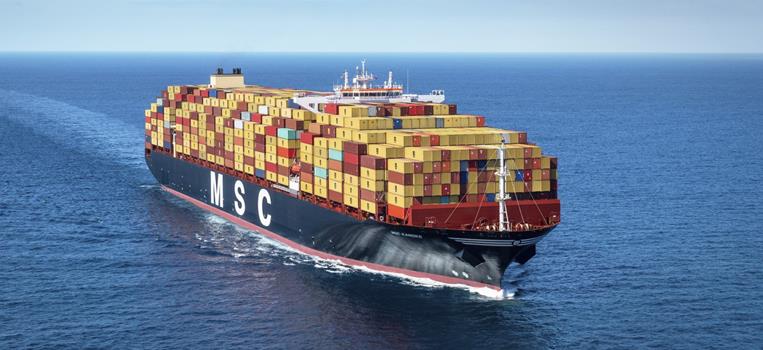DCSA Establishes IoT Standards for Container Connectivity
Connectivity interface standards to enable interoperable “smart container” solutions
Digital Container Shipping Association (DCSA), a neutral, non-profit group established to further digitalisation of container shipping technology standards, in conjunction with its nine member carriers, today published IoT connectivity interface standards for shipping containers. The standards can be implemented by vessel operators and owners as well as ports, terminals, container yards, inland logistics providers and other third parties to ensure interoperability between smart container solutions at the radio interface level. With these standards in place, carriers and supply chain participants will be one step closer to providing customers with an uninterrupted flow of relevant information regarding the whereabouts of containers and the status of their contents at any point along the container journey. This is one of many initiatives to be put forth by DCSA to accelerate digitalisation through a unified industry effort.
The DCSA IoT Standard for Gateway Connectivity Interfaces, which can be freely downloaded from the DCSA website, includes radio standards for gateways on vessel, on land, at event locations and in handheld devices. These DCSA IoT standards provide an initial set of connectivity recommendations that are vendor and platform agnostic to reduce investment risk, increase operational efficiency and enable innovation. Ultimately, DCSA IoT standards will allow carriers and other supply chain participants to focus on providing more valuable services and a better experience to their customers.
The new standards are the first of three planned IoT standards releases addressing the connectivity requirements for reefer and dry containers, as well as the RFID registration of these containers. Future releases will focus on data structure and handling, physical device specifications as well as security and access management.
“IoT will usher in a new era of efficiency in global trade. Smart containers that share information with multiple stakeholders will facilitate a digitally enabled supply chain. This will greatly increase efficiency and transparency, improve the quality of shipped goods, reduce waste across the board, and raise safety and security levels,” said Maria Rosaria Ceccarelli, Chief of Trade Facilitation Section for UNECE . “Interoperability of IoT devices is one of the keys to enable massive smart containers deployment, taking the digital age of shipping one step further beyond paperless processes by embracing the Internet of Things (IoT) to support enhanced decision-making by the various sectoral stakeholders. This standards release by DCSA is very important and complementary with the UN/CEFACT interoperability standards, namely the Multi Modal Transport Data Reference Model and the Smart Container Business Requirement Specifications in particular. I believe that these standards will play an important role in aligning the industry in terms of IoT interoperability.”
“We are thrilled to be introducing our first set of IoT standards for the industry,” said Thomas Bagge, CEO of DCSA. “This release is an important step in enabling mass deployment of smart containers and forms the foundation of a group of standards that will address the industry’s most critical container use cases. Once implemented, our IoT standards will enable, for example, reefer container tracking, monitoring and controlling along the entire container journey, with no connectivity ‘blind spots’. This will provide more value to the end customer while increasing the efficiency of container operations. Equally as important, we’re giving the industry a framework for interoperability that will allow stakeholders to create innovative IoT solutions that can be leveraged by any industry stakeholder, market supplier or service provider.”
Similar Stories
Danica strengthens its representation in Athens
Danica Crewing Specialists is delighted to announce it now has an in-person presence in Athens, strengthening its representation in Greece. Seasoned crewing expert Dimitris Liolios has taken office as Danica’s…
View Article
WEC Lines launches new barge service between Moerdijk and Duisburg
View ArticleIndian Register of Shipping strengthens role in major defense projects
Indian Register of Shipping (IRS), a leading international classification society, is proud of its growing role in advancing India's defense capabilities through its participation in major new construction projects for…
View Article
MSC Announcement: Trade update
View ArticleWorld Shipping Council: Shipping carriers move to prevent deadly charcoal fires
The shipping industry is taking proactive steps to implement improved safety measures for transporting charcoal, ahead of mandatory IMO regulations in 2026.
View Article
MSC Announcement: GRI - General Rate Increase Feb 2025
View ArticleGet the most up-to-date trending news!
SubscribeIndustry updates and weekly newsletter direct to your inbox!





